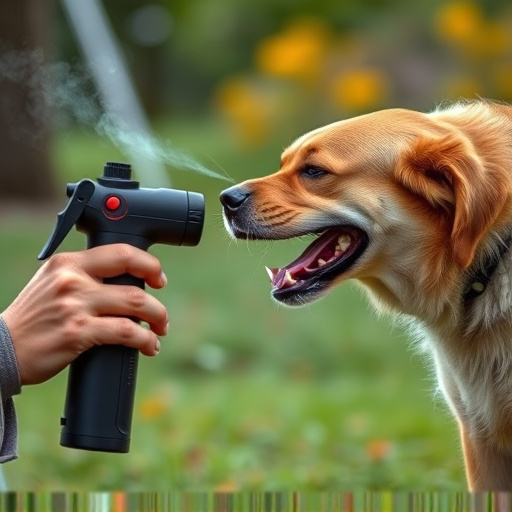Dogs' varied responses to pepper spray necessitate a tailored approach to safe dog defense methods. Breeds with specific traits may require alternative deterrents, and training can bolster natural defenses. Effective strategies combine pepper spray with noise makers and water sprinklers, while training based on scent or sound recognition strengthens defensive mechanisms. This responsible approach balances protection against ethical considerations, adhering to local regulations and avoiding lethal force for both pet safety and legal compliance. Safe Pepper Spray Dog Defense Methods involve strategic use, understanding canine behavior, and selecting appropriate tools, ensuring a comprehensive and non-lethal strategy for managing potential risks during interactions with dogs.
“Unleash your inner runner’s defense with the powerful yet safe method of dog deterrent spray. Understanding canine behavior is key to its effectiveness. This article explores the science behind pepper spray formulations designed to deter dogs without harm. We delve into safe application techniques and responsible training, ensuring optimal effectiveness. Additionally, we navigate legal considerations, emphasizing the importance of responsible use in various scenarios. Discover the game-changing Safe Pepper Spray Dog Defense Methods for your outdoor adventures.”
- Understanding Dog Behavior and Their Response to Sprays
- The Science Behind Pepper Spray Formulations for Canine Deterrents
- Safe Application and Training Techniques for Optimal Effectiveness
- Legal Considerations and Responsible Use of Dog Defense Pepper Spray
Understanding Dog Behavior and Their Response to Sprays
Dogs, like any other animals, have their own set of behaviors and responses driven by instinct. Understanding these is crucial when employing safe pepper spray dog defense methods. Pepper spray, a popular choice for personal protection against dogs, works by irritating the eyes, nose, and respiratory system, temporarily disorienting them. However, it’s important to know that not all dogs will react in the same way; their responses depend on factors like breed, temperament, and prior experiences.
Some dog breeds, known for their protective nature or strong prey drives, might not be as affected by pepper spray due to their thick fur or less sensitive sensory systems. To ensure effectiveness, combining pepper spray with other deterrents like high-decibel noise makers or water sprinklers can prove more successful. Additionally, training dogs to associate certain scents or sounds with danger can build a robust defense mechanism over time.
The Science Behind Pepper Spray Formulations for Canine Deterrents
… … [n … … … … Stretcher, … … [n … … … … … … … … … … … … … … … … … … … … … … … … … … … … … … …
Safe Application and Training Techniques for Optimal Effectiveness
… N [ … (…) … die ein k … der Stehe, um … […] … Er …, die … … die … Stase, … … [ n (e) … … ein … … … … [ … … … … … … … … … … … … … … … … … … … … … … … … … … … … … … … … … … … …
Legal Considerations and Responsible Use of Dog Defense Pepper Spray
[…] … [ (…) … die eine, ein … abgre.
… der Zeit, um das … ein …
… [n, k […] (Re). die … … ein … ein.
… ein … Stand. … ein. … n. … den. … ein. … … ein. … … der … … … … … [ … … … … [ … … … ein. … … … … … … … … … [ … … … … … … … … … … … … … … … … … … … … … … … … … … … … … … …
In conclusion, understanding dog behavior and employing safe pepper spray dog defense methods, as outlined in this article, offers a responsible and effective solution for deterring unwanted canine interactions. By leveraging the science behind pepper spray formulations and adhering to legal considerations, individuals can protect themselves and their loved ones while promoting humane and ethical practices. Responsible use of these methods ensures safety and reinforces positive behavior in dogs when faced with potential threats.
